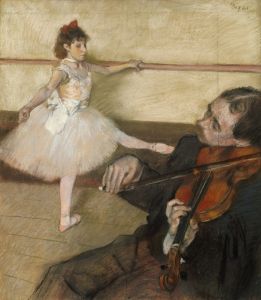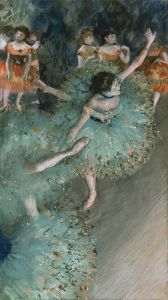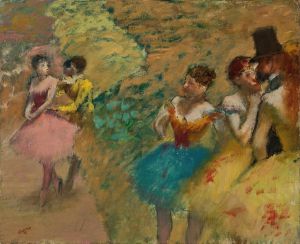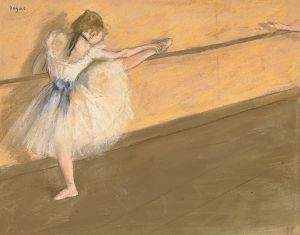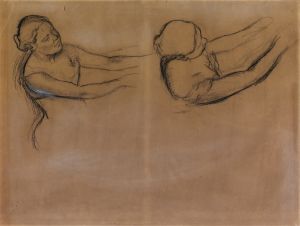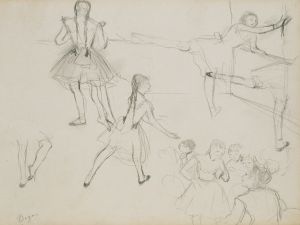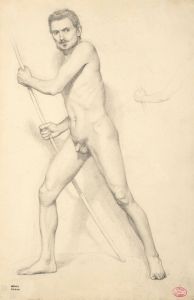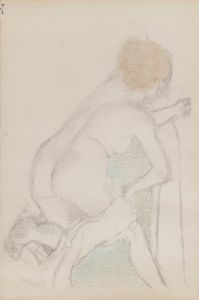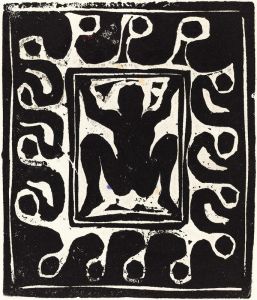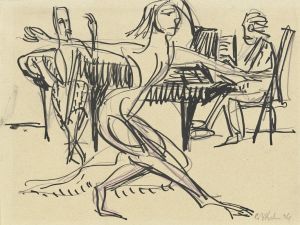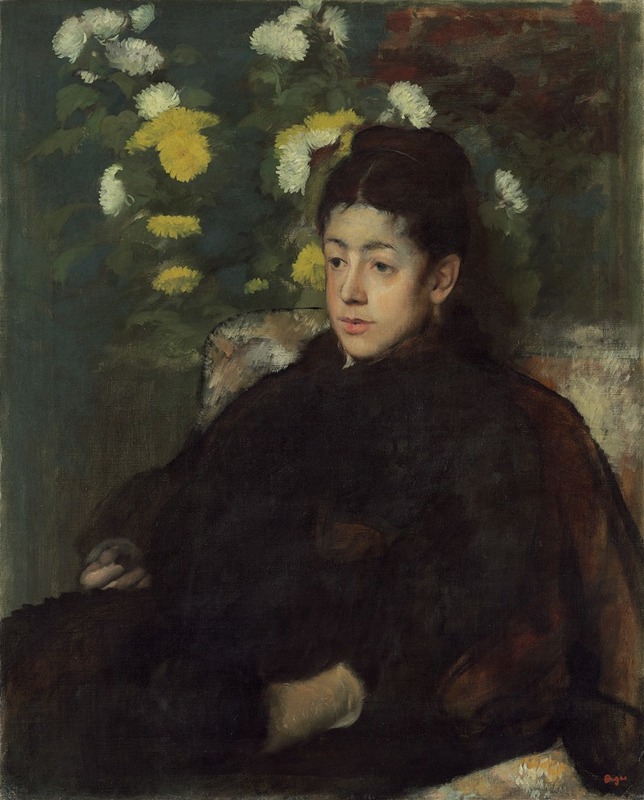
Mademoiselle Malo
A hand-painted replica of Edgar Degas’s masterpiece Mademoiselle Malo, meticulously crafted by professional artists to capture the true essence of the original. Each piece is created with museum-quality canvas and rare mineral pigments, carefully painted by experienced artists with delicate brushstrokes and rich, layered colors to perfectly recreate the texture of the original artwork. Unlike machine-printed reproductions, this hand-painted version brings the painting to life, infused with the artist’s emotions and skill in every stroke. Whether for personal collection or home decoration, it instantly elevates the artistic atmosphere of any space.
Edgar Degas, a prominent French artist known for his contributions to Impressionism, created a wide array of works that captured the nuances of modern life in the 19th century. Among his extensive oeuvre, "Mademoiselle Malo" is a lesser-known piece that reflects his keen interest in portraiture and the exploration of human character.
Edgar Degas was born on July 19, 1834, in Paris, France, and he became renowned for his innovative approach to painting, sculpture, and drawing. His work often focused on dancers, women at work, and scenes of Parisian life. Degas was particularly interested in the human form and movement, which is evident in his numerous studies of ballet dancers and racehorses. However, his portraits also reveal a deep understanding of character and psychology.
"Mademoiselle Malo" is a portrait that exemplifies Degas's skill in capturing the essence of his subjects. While specific details about the identity of Mademoiselle Malo or the circumstances of the painting's creation are not widely documented, the work is consistent with Degas's style during the period when he was deeply engaged in portraiture. Degas's portraits are known for their psychological depth and the subtle interplay of light and shadow, which he used to convey the inner life of his subjects.
In "Mademoiselle Malo," Degas employs his characteristic use of soft, muted colors and delicate brushwork to create a sense of intimacy and immediacy. The composition likely reflects Degas's interest in capturing candid, unposed moments, a hallmark of his approach to portraiture. This technique allows the viewer to engage with the subject on a personal level, offering a glimpse into the sitter's personality and mood.
Degas's portraits often eschew the formal conventions of the time, opting instead for a more naturalistic and spontaneous representation. This approach is evident in "Mademoiselle Malo," where the focus is on the subject's expression and demeanor rather than on elaborate settings or costumes. Degas's ability to convey the subtleties of human expression is one of the defining features of his portrait work.
Throughout his career, Degas maintained a strong interest in the technical aspects of painting, frequently experimenting with different media and techniques. This experimentation is reflected in the varied textures and surfaces seen in his works, including "Mademoiselle Malo." Degas's innovative use of materials and his attention to detail contribute to the lifelike quality of his portraits.
While "Mademoiselle Malo" may not be as widely recognized as some of Degas's other works, it remains an important example of his portraiture and his ability to capture the complexity of human emotion. The painting is a testament to Degas's skill as an artist and his enduring interest in the human condition.
In summary, "Mademoiselle Malo" by Edgar Degas is a portrait that showcases the artist's mastery of capturing the subtleties of human expression and character. Although specific details about the painting are limited, it remains a significant work within Degas's body of portraiture, reflecting his innovative approach to capturing the essence of his subjects.






